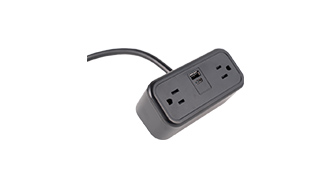
Date:2024-03-06 00:00:00
Vists:
A power socket is a device that is used to connect electrical devices to a power supply cord,which provides an electrical supply to the electrical device.A power socket is usually mounted on a wall or other fixed surface into which the power supply cord plugs.
A power socket usually contains the following major components:
1.Shell:The shell of a power socket is usually made of flame retardant plastic or metal with appropriate insulating properties to ensure a reliable ground for use.
2.Jack:The jack is the part used to insert the power plug.The design of the jack varies according to different plug types and standards to ensure that the plug can be inserted reliably and make contact with the socket.

3.Contact tabs:The contact tabs are located inside the jack and make direct contact with the contact foot of the plug to conduct power.The contact tabs are usually made of a good conductive material to ensure stable and reliable current transfer.
4.Terminal block:The terminal block is located on the back of the socket and is used to connect the power cord.The terminals usually have set screws or pressure contacts designed to ensure a reliable connection between the power cord and the outlet.
5.Grounding prong(some outlets):Some outlets are also equipped with a grounding prong,which is used to ground electrical equipment to provide additional reliable ground protection.
The power socket is the bridge between the electrical equipment and the power source,which plays the role of connecting and transmitting power.It is important to select and use the right power socket to ensure the proper operation and reliable use of electrical equipment.At the same time,the installation and maintenance of power sockets needs to be done with care and in accordance with the appropriate electrical reliability standards and requirements.
